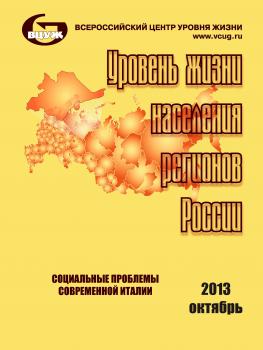The paper considers the place of international migration in the various theoretical demographic structures (research areas, theories, concepts that are combined in the general concept named «demographic theory») and takes into account its evolution. In this theory, the demographic evolution itself largely due to the changing of role and place of international migration in the demographic development of the world and in some individual states. Special attention is paid to the general theory of population, the classical theory of demographic transition and the concepts of demographic transition. Also the paper gives brief description of the modern trends of international migration of population and shows increasing importance in the demographic development of immigration and emigration countries.
international migration of population, non–return migration, labor migration, illegal migration, demographic approach to the study of migration, basic patterns of international migration
1. Теоретическое введение
В Россия, как и многих других развитых странах, усиливается демографический кризис, хотя в последние пять-семь лет количественные показатели естественного движения населения улучшились. В 2013 г. естественный прирост населения впервые за последние 20 лет стал положительным, составив 24 тыс. человек; сальдо миграции составило 296 тыс. человек, что подтверждает сохранение ее главной роли в общем росте населения России [Федеральная служба государственной статистики, 2014. С. 11]. Можно предположить, что эта роль в ближайшем будущем будет возрастать, учитывая, что естественное движение населения вернется к отрицательному тренду. Это обусловлено вступлением в репродуктивный возраст малочисленного поколения женщин, родившихся в 1990-е гг. (это подтверждают данные за первую половину 2014 г.).
Особую значимость приобретает теоретическое изучение роли международной миграции населения в демографическом развитии. При этом подчеркнем, что как в российской, так и зарубежной научной литературе нет четкого определения понятия «демографическое развитие». По нашему
1. Valentey D.I. Sistema znaniy o narodonaselenii. M.,1976.
2. Van de Kaa D. O mezhdunarodnoy migratsii i kontseptsii vtorogo demograficheskogo perekhoda. Mir v zerkale mezhdunarodnoy migratsii. M.: MAKS Press, 2002. S. 91.
3. Zvereva N.V. Razrabotka teorii narodonaseleniya v otechestvennoy nauke (60-80-e gg.) M., 1998.
4. Iontsev V.A. Mezhdunarodnaya migratsiya naseleniya: teoriya i istoriya izucheniya. M., 1999.
5. Iontsev V.A. Klassifikatsiya osnovnykh teoreticheskikh podkhodov v izuchenii migratsii naseleniya. M., 2013. T. 1. Ch. 3.
6. Iontsev V.A. Mezhdunarodnaya migratsiya naseleniya: vyzovy globalizatsii. M.: TEIS, 2011.
7. Iontsev V.A., Prokhorova Yu.A. Formirovanie «novogo naseleniya» v svete kontseptsii chetvertogo demograficheskogo perekhoda. Vestnik Moskovskogo universiteta. Seriya 6: Ekonomika. 2012. № 4.
8. Sovi A. Obshchaya teoriya naseleniya. T. 1. 1977.
9. Sovi A. Obshchaya teoriya naseleniya. T. 2. 1977.
10. Susokolov A.A. Mezhnatsional´nye braki v SSSR. M., 1987.
11. Federal´naya sluzhba gosudarstvennoy statistiki Rossii, 2014. URL: http://www.gks.ru/
12. European Demographic Data Sheet 2014,Vienna Institute of Demography, 2014.
13. Van de Kaa D. Europe’s Second Demographic Transition. Population Bulletin. 1993. Vol. 42. № 1. P. 5.
14. Caldwell J.C. Toward a restatement of demographic transition theory. Population and Development Review. 1976. V. 2. № 3-4.
15. Iontsev V., Prokhorova Y. To the issue of international migration and nuptiality in the concept of the fourth demographic transition. The eff ects of migration on areas of destination, M., 2013.
16. Coleman D.A. Immigration and ethnic change in low-fertility countries: a third demographic transition. Population and Development Review. 2006. № 32(3). R. 401- 446.





